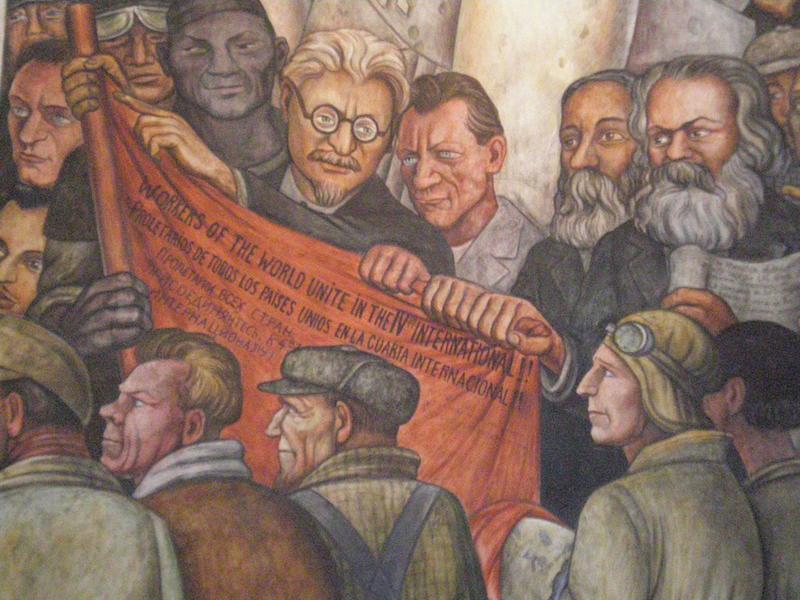Where Does Our American Fear Of Communism Come From?
By | March 3, 2021

How did communism become the Big Bad to the American way of life? Americans were on board with communists throughout the early 20th century, but after World War II, the country lost its love for the Soviet Union. What began as a difference of opinion over industry and the economy has since become a fear of the red boogeyman.
Ancient Communism
Regardless of what Joseph McCarthy would have you think, communism didn't creep out of the cold ground of Russia in the 1950s -- criticism of private property and class systems has been around since Ancient Greece. Subsequent religious groups and various monastic communities made it a point to share property and assets, but the idea of communism was first put on paper by Thomas More, the 16th-century English author of Utopia. By the 18th and 19th centuries, the religious aspect of most communist communities was replaced by a philosophical rejection of class structure as well as the accumulation of wealth and property.
It wasn't until the 19th century that the political and social merged during the Industrial Revolution, which brought a new kind of existential misery to the working class. In 1848, Karl Marx and Friedrich Engels reclassified communism as the rejection of materialism. Many of their policies were (and some still are) radically progressive, including progressive tax rates, the expansion of publicly owned land, free public education, and the abolition of child labor.

Communism And War
When those communist manifestos intersected with the politics of Civil War America, the backlash began. At the 1850 Nashville convention on Southern secession, former Speaker of the House and Southern Carolina Congressman Langdon Cheves denounced abolitionism as a form of communism, accusing those who wanted slaves to live free of plotting to force wealthy landowners to give their property to the public. By the 1930s, the relationship between anti-racism and communism became explicit, as American communists began focusing their efforts on the Jim Crow laws, which did little to assuage the fears of those in power.
Anticommunist sentiment died down during World War II, when the Russian military did the lion's share of the ground fighting against the Nazis, but the moment the war was over, Russia and its communist ideals became the enemy of America. Officials feared the Soviet Union was using U.S. citizens to carry out espionage activities, so in 1947, President Harry S. Truman ordered all federal employees to take a loyalty oath. By that point, however, the House Un-American Activities committee was alive and kicking, and that's where the real action was.

The House Un-American Activities Committee
The House Un-American Activities Committee was formed in 1938 to weed out communists in Hollywood who were supposedly scheming to place subversive, anti-American sentiments into the pictures. Senator Joseph McCarthy, the leader of the committee, never produced any evidence that a secret cadre of communists lurked within the industry, but he could (and often did) ruin the lives of those he suspected.
Eventually, McCarthy went too far by attacking the former President Truman on a televised broadcast in 1953, and President Eisenhower spent the next few months discrediting McCarthy and his team before the Senate followed suit and passed a motion of condemnation against McCarthy, but not before the senator plunged the country into a frenzy of terror. Anyone, from an actor on the big screen to your next-door neighbor, could be The Enemy, and the situation wasn't helped by the successful test of a nuclear bomb in the Soviet Union in 1949 or Mao Zedong's takeover of China the next year. By 1951, the Supreme Court ruled that First Amendment restrictions were A-okay in the case of accused communists because of the danger they posed to the government.

Communism Today
Anticommunism maintained its racist undertones well into the '60s, when Martin Luther King, Jr. was painted as a communist and the F.B.I. feared that his calls for peaceful protest would link "communist influence" with "Black nationals" to cause "an extremely explosive situation." By the '80s, movies like Red Dawn and Rocky IV took anticommunist sentiments to the bombastic heights that could only be accomplished by Hollywood in that decade. They invariably pitted the scrappy American good guys against perfect blond Soviet clones, illustrating the power of rugged individualism while conveniently whitewashing the enemy. Even today, Russian villains can be seen in movies of every genre, from John Wick to Muppets Most Wanted.

